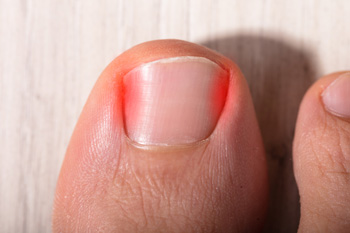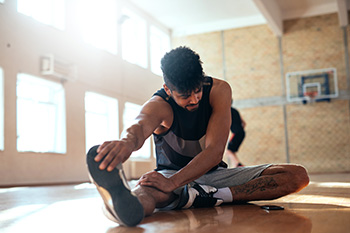Connect With Us
Blog
Items filtered by date: July 2023
Understanding and Managing Pincer Nails

Pincer nails occur when the nail plate excessively curves, pinching the surrounding skin. They are also known as trumpet nails and are the most painful type of ingrown toenail. Unlike classic ingrown toenails, which affect one side of the big toe, pincer nails can develop on any toenail and roll into the skin on both sides of the nail plate. This condition causes discomfort and can feel like a splinter or glass as the nail digs into the skin. If left untreated, it can lead to redness, tenderness, inflammation, and even infection. Pincer nails can be caused by genetics, tight shoes, and improper toenail cutting. The elderly and pregnant women are more prone to this issue. Relief can be achieved by straightening the toenail, and in some cases, surgery may be necessary. If you are experiencing pincer nails, it is strongly suggested that you seek treatment from a podiatrist.
Ingrown toenails can become painful if they are not treated properly. For more information about ingrown toenails, contact Katie Besselman, DPM of Advanced Podiatry. Our doctor can provide the care you need to keep you pain-free and on your feet.
Ingrown Toenails
Ingrown toenails occur when a toenail grows sideways into the bed of the nail, causing pain, swelling, and possibly infection.
Causes
- Bacterial infections
- Improper nail cutting such as cutting it too short or not straight across
- Trauma to the toe, such as stubbing, which causes the nail to grow back irregularly
- Ill-fitting shoes that bunch the toes too close together
- Genetic predisposition
Prevention
Because ingrown toenails are not something found outside of shoe-wearing cultures, going barefoot as often as possible will decrease the likeliness of developing ingrown toenails. Wearing proper fitting shoes and using proper cutting techniques will also help decrease your risk of developing ingrown toenails.
Treatment
Ingrown toenails are a very treatable foot condition. In minor cases, soaking the affected area in salt or antibacterial soaps will not only help with the ingrown nail itself, but also help prevent any infections from occurring. In more severe cases, surgery is an option. In either case, speaking to your podiatrist about this condition will help you get a better understanding of specific treatment options that are right for you.
If you have any questions please feel free to contact our office located in Saint Peters, MO . We offer the newest diagnostic and treatment technologies for all your foot and ankle needs.
Effective Stretches May Help to Prevent Running Injuries

People who enjoy running are all too familiar with the fear of incurring a running injury. The majority of running injuries can be prevented when simple strategies are implemented. These are the same techniques for all runners, ranging from weekend warriors to people who run several marathons. Research has shown that stretching is an important factor which may help to prevent running injuries. The hip flexor and quad stretch is done by kneeling on one knee on a mat while pulling the tailbone inward, and pushing the hips forward. This stretch will be felt in front of the hip. For people who prefer a deeper stretch, the ankle can be grabbed, and brought close to the glutes. A calf stretch is effective in exercising the heel and sole of the foot. This is performed by standing on a step while lowering the heels one at a time until a gentle stretch is felt. There are additional stretching techniques that can be done which can protect the feet while running. If you would like more information about how to perform these, it is suggested that you consult with a podiatrist.
Exercising your feet regularly with the proper foot wear is a great way to prevent injuries. If you have any concerns about your feet, contact Katie Besselman, DPM of Advanced Podiatry. Our doctor will treat your foot and ankle needs.
How to Prevent Running Injuries
Many common running injuries are caused by overuse and overtraining. When the back of the kneecap starts wearing out and starts causing pain in your knee, this is commonly referred to as runner’s knee. Runner’s knee is a decrease in strength in your quadriceps and can occur if you’re not wearing properly fitted or supporting shoes. To prevent runner’s knee, focusing on hip strengthening is a good idea, as well as strengthening your quads to keep the kneecaps aligned.
What Are Some Causes of Running Injuries?
- One cause of a common running injury is called iliotibial band syndrome.
- Plantar fasciitis is also another common injury.
- Stress fractures can occur from overtraining, lack of calcium, or even your running style.
Best Ways to Prevent Running Injuries
- Wear footwear that fits properly and suits your running needs.
- Running shoes are the only protective gear that runners have to safeguard them from injury.
- Make a training schedule. Adding strengthening exercises as well as regular stretching can help keep you strong and limber and can lessen the possibility of injuries.
- Stretching keeps muscles limber; this will help you gain better flexibility.
If you have any questions please feel free to contact our office located in Saint Peters, MO . We offer the newest diagnostic and treatment technologies for all your foot and ankle needs.



